So Funny It Hurt Keaton Dvd

not all great DVDs are in 5.1
Silent DVD Archive
Buster Keaton Collection and Industrial Strength Keaton
The beginning of 2006 has been pretty bare as far as new releases of silent films go. There really hasn't been too many new films released in region one so far this year. I can't really complain though, after the wonderful Harold Lloyd boxed set, the Unseen Cinema set, and the second wave of Kino's Slapstick Symposium that were all released at the end of 2005, I can weather a dry period.
While there's not a lot that has been scheduled, there is one silent release on the horizon. Image has announced the next volume in their series of silent double features. May 23rd will see the release of The Clinging Vine (1926) starring Cecil B. DeMille's favorite actress Leatrice Joy, along with the David Shepard documentary The Age of Ballyhoo (1986) which is narrated by Gloria Swanson. It should be a good disc.
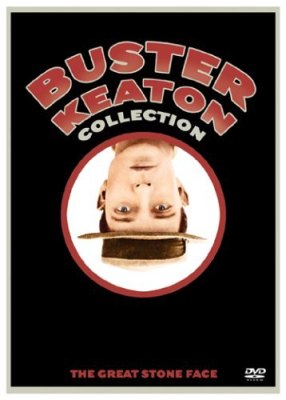 Because of the lack of new silent film releases, I'm going to cheat a little with this column and review a trio of releases that feature silent comedians in sound pictures. Two Buster Keaton sets that are filled with his rarely seen later works have recently been released. The inventively named The Buster Keaton Collection (not to be confused with TCM's The Buster Keaton Collection) contains all ten shorts that Keaton did for Columbia between 1939 and 1941. These films have a reputation for being among Keaton's worst work, and apparently the executives at Columbia, who released this set, realized that. No mention is made on the cover that these are the Columbia shorts or that they are even talkies. They do mention, at the end of the blurb, that these are "unforgettable 40's comedies" but it really seems that they are trying to trick people into thinking that this set is something that it's not. Even the cover of the set has a picture of Buster that was taken years before these films were made. An all around rotten job by Columbia.
Because of the lack of new silent film releases, I'm going to cheat a little with this column and review a trio of releases that feature silent comedians in sound pictures. Two Buster Keaton sets that are filled with his rarely seen later works have recently been released. The inventively named The Buster Keaton Collection (not to be confused with TCM's The Buster Keaton Collection) contains all ten shorts that Keaton did for Columbia between 1939 and 1941. These films have a reputation for being among Keaton's worst work, and apparently the executives at Columbia, who released this set, realized that. No mention is made on the cover that these are the Columbia shorts or that they are even talkies. They do mention, at the end of the blurb, that these are "unforgettable 40's comedies" but it really seems that they are trying to trick people into thinking that this set is something that it's not. Even the cover of the set has a picture of Buster that was taken years before these films were made. An all around rotten job by Columbia.
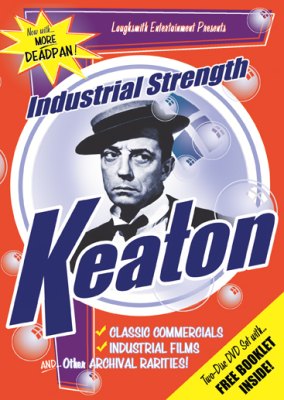 A much better set is the newest release from Laughsmith Entertainment and Mackinac Media: Industrial Strength Keaton. These are the same folks who released the amazing Forgotten Films of Roscoe "Fatty" Arbuckle last year. While this collection isn't as exciting as that one, they have dug up a lot of rare and interesting Keaton films. This set has some of Keaton's live TV appearances, rare industrial films that he made (some of which are very funny), promotional films from the 30's and even TV commercials. This is an all around nice set that compliments any Keaton collection.
A much better set is the newest release from Laughsmith Entertainment and Mackinac Media: Industrial Strength Keaton. These are the same folks who released the amazing Forgotten Films of Roscoe "Fatty" Arbuckle last year. While this collection isn't as exciting as that one, they have dug up a lot of rare and interesting Keaton films. This set has some of Keaton's live TV appearances, rare industrial films that he made (some of which are very funny), promotional films from the 30's and even TV commercials. This is an all around nice set that compliments any Keaton collection.
One final note before getting to the reviews. The San Fransisco Silent Film Festival has released the dates for their 11th annual event. It will take place on July 14, 15, and 16, 2006 at the Castro Theatre in San Francisco. The schedule will be released on April 25th. This is the premier silent film festival in the country, and I encourage everyone who is interested in silent movies to try to attend.
Another film festival that features silent films is scheduled the following week on the other side of the US. The fourth annual Slapsticon will be held on July 20–23, 2006 in Arlington, Virginia. This festival is dedicated to screening rarely seen silent and early sound comedies. These films are so much more enjoyable when they are seen with an audiance, I'm sure that it's a wonderful event. As soon as they release their film schedule I'll let you know.
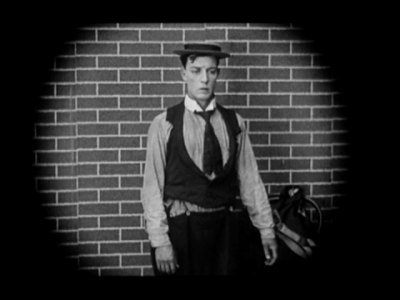
Buster Keaton was one of the three great silent comedians. Along with Harold Lloyd and Charlie Chaplin, he created some of the funniest films of the silent era, movies that are still enjoyed today. Unlike Chaplin and Lloyd however, Keaton never achieved financial freedom. He always had someone else produce his films. For a long time it was Joseph M. Schenck. Schenck pretty much left Keaton on his own to work out the films as he best saw fit, and under this arrangement Keaton created his best films including The General, Cops, and Steamboat Bill Jr.
In 1928 Schenck sold Keaton's contract to MGM. Unfortunately, the powers that be at MGM didn't really know what to do with Keaton. They gave him scripts unsuited to his style and didn't allow him to improvise. As time went by, Keaton found himself under more and more studio control, and started drinking heavily. In one of the most mis-matched comedy duos of all time, MGM even teamed Keaton up with Jimmy Durante, a comedian who was ill suited to Keaton's subtle thought-out style. These films were pretty poor in quality, and the company let his contract lapse in 1933.
For the next few years Keaton bounced around taking work where he could find it. The fact that he was a heavy drinker and hadn't had a hit movie since the silent era made this rather difficult. Eventually he landed a job as a gag man at MGM, and also worked at Educational, a poverty row studio, churning out two reelers in which he recycled a lot of the gags he originally developed for his silent films.
The Buster Keaton Collection:
In 1939 a sober Buster Keaton got a break, or so it seemed: Columbia hired Keaton to star in a series of two reel comedies. Columbia has now released all ten of these films that Keaton made between 1939-1941 in a nicely remastered two disc set: The Buster Keaton Collection. Unfortunately these are among the very worst films Keaton ever appeared in, and the set will do nothing to win him new fans.
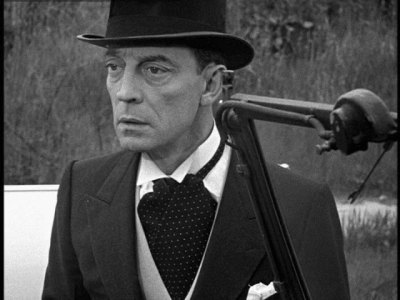 |
| |
While Keaton jumped at the chance to work in front of the camera again, there were some problems with the contract. First, the pay wasn't very good, only $2,500 a picture, half of what he was being paid at Educational. The other bad thing was the director he would be working with. In all but one short, Jules White was at the helm. White was known for broad and low-brow comedies, he had directed the Three Stooges on several occasions, and was about as subtle as a flying mallet. This was the exact opposite of Keaton's style and these films show how uncomfortable he was doing this type of comedy.
Viewing these films today is painful. They are embarrassingly bad. Everything is done in the wrong way, and nothing goes right. The first thing that you notice about these shorts is that they aren't subtle in the least. Keaton would often work for a month or more on a short, but these shorts were thrown together in three or four days. The action is fast and frantic, with no time for set-ups or to try to build a gag. The plots, which are pretty interchangeable and didn't really matter, were often given in a sentence or two at the very beginning of the film and then forgotten. Keaton would see an army nurse, declare that he's in love, and run off to join the army. That's about it. Unlike Keaton's silent shorts where he'd spend a lot of time and energy making the events in the film seen natural, at Columbia they didn't even try. There isn't any reason for the actions that take place to occur, aside from the need to get to the next gag.
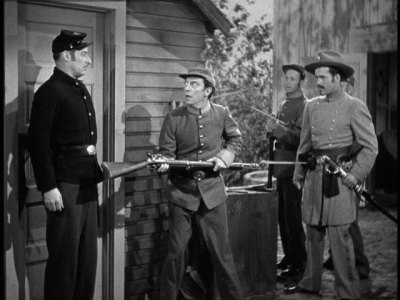 |
| |
If that wasn't bad enough, Columbia didn't trust Keaton to carry a two-reeler by himself. They gave many of the gags and jokes to the supporting actors (often comediennes Dorothy Appleby and Elsie Ames), minimizing Keaton's role even further. These co-stars almost universally overacted and hammed it up, trying to get some comedy out of the unfunny set-ups.
The comedy in these films might have entertained audiences during the depression, but seen today they are simply horrible. Not only is there no subtlety, but the gags are incredibly lame. In one short Keaton asks a pair of men riding in a car if they can give him "a lift." So the men get out of the car and lift Keaton up in the air. Woo-hoo. That's a knee slapper there. These shorts are filled with that sort of comedy.
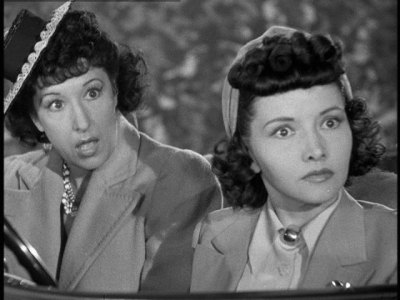 |
| |
In addition to the lame scripts, Keaton basically phoned his performances in. White didn't want any input or ad-libs from Keaton, and Keaton seemed to know how bad the films he was making were. There isn't that Keaton spark that livened up his silent films, he doesn't seem to put forth much effort at all. Every once in a while he'll skip out of the way in a fashion that seems to harken back to the old Keaton films, but these moments are rare.
The films included in this set are not arranged in chronological order for some odd reason. The movies on these discs, in the order that these films were released, is:
Pest from the West
Mooching Through Georgia
Nothing But Pleasure
Pardon My Birthmarks
The Taming of the Snood
The Spook Speaks
His Ex Marks the Spot
So You Won't Squawk
General Nuisance
She's Oil Mine
The DVD:
Audio:
These films are presented with a their original mono soundtrack, split across two channels. The audio has been cleaned up and sounds very good for something of this age. There isn't any tape hiss or background noise, something that's very common with films from the late 30's, and the dialog is clear. There isn't a lot of range of course, but that's to be expected. A very nice sounding set of discs.
Video:
The full frame black and white image looks very good. These films have been restored and have excellent detail and contrast. There is a little bit of grain in the image, but this isn't a big problem. It's too bad the quality of the content of these films doesn't match the quality of their presentation.
Extras:
One of the nice things about this set is that each short has a commentary track by a different film historian. While there is some repetition in these tracks, they are informative and fun to listen to. They give the history of Keaton and the other actors in the films, talk about the director and writers and generally present everything you need to know about this period in Keaton's life. I actually enjoyed watching these shorts with the commentaries much more than with their original soundtracks.
There is also a 25-minute featurette Buster Keaton: From Silents to Shorts. This has many of the people who appear on the commentary tracks talking about Keaton's life. They show a lot of clips from his earlier films so that viewers go away from this set realizing that Keaton was a very talented comedian, something that they wouldn't have gotten if they only watched these shorts.
There is also a 32-page book which reproduces the shooting script for She's Oil Mine that included handwritten notes and comments.
Final Thoughts:
These are just bad films. They aren't funny, and Keaton doesn't even try. It is often painful to watch these short, knowing how funny Keaton can be, and see the lame material that he was forced to work with. I'm a die hard Keaton fan, but I really can't say I enjoyed any of these shorts. Add to that the fact that Columbia is trying to trick people into thinking that these are Keaton's earlier silent shorts by putting a picture of him on the cover that was taken 15-20 years before these films were made, and it's easy to recommend skipping this collection.
After Keaton's 10 shorts with Columbia, Buster made his living by taking small roles in feature films. With the advent of television though, he found a new outlet for his talents. Making may appearances on TV comedy and variety shows Keaton gained a new fans. His newfound popularity meant more work, and he appeared in several commercials and industrial films. Now the good people at Laughsmith Entertainment in association with Mackinac Media have gathered a collection of Keaton's lesser seen works, including the aforementioned TV show and commercial appearances, as well as promotional films and two of his sound features (including one made at MGM,) and a silent short, appearing for the first time with the original intertitles. This is a great collection that supplements Kino's fine set of Keaton silent films very well.
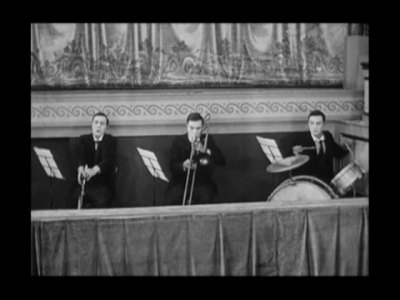
There is a lot of material in this collection, and most of it is pretty funny. This two disc set starts out with one of Keaton's great silent shorts, The Playhouse (1921). In this amazing short, a technical tour de force, Keaton plays a nine piece orchestra all by himself and appears as all nine musicians on the screen at the same time. Not only is the film a technical masterpiece, but it's funny too. Buster plays a stage hand at a playhouse who gets into all sorts of trouble with a pair of twins, and a strongman who's beard catches on fire.
This version of the film is a little bit different than all the other versions that have been released on home video. In addition to having the original intertitle cards, this version has reputedly restored the scenes to their original order. It's a minor change, just two shots are switched, but it is nice to have this short as it was intended to be sene. I wish they would have given a little more information about how the producers became convinced that just about all of the other prints were incorrect. On the commentary track all they do is mention that the curator of the Raymond Rohauer film archive said that the print they had restored had the scenes switched. No more information was given.
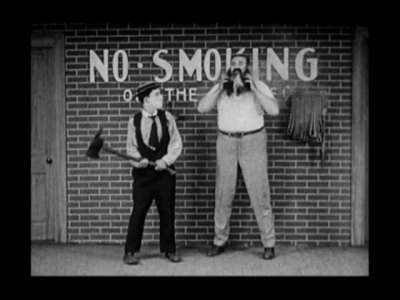
Next up is Keaton's fourth taking film, made for MGM in 1931, Parlor, Bedroom, and Bath. Keaton's films went steadily down hill during his time at MGM, they just didn't know what kinds of scripts to give him. This film is a good illustration of this.
The plot is a very loose retelling of The Taming of the Shrew. Virginia (Sally Eilers) wants to marry her boyfriend Jeff (Reginald Denny) but refuses to until her older sister Angelica (Dorothy Christy) is wed. Jeff hits Reggie (Buster Keaton) with his car and takes him to Virginia's house to recuperate when he comes up with an idea: He'll get Reggie to marry Angelica. The only problem is that Reggie is a shy sap, and Reggie needs to convince everyone he's a great lover.
This film starts off dreadfully slow. The first 45 minutes are very bland and dull. Things start to move in the last act though, when Polly (Charlotte Greenwood who steals every scene that she's in) teaches Reggie how to woo a woman. The last section is very funny and worth watching, it's just not worth sitting through the first acts to get to it.
One interesting thing about this movie is that it the exterior shots were filmed at Keaton's Beverly Hills Mansion. It is a nice chance to see his "Italian Villa" in it's prime. Keaton would sell the house in 1933.
Character Studies is a short film, recently discovered, that was probably made for a party at Pickfair. It has cameo appearances by magician Carter DeHaven, Roscoe "Fatty" Arbuckle, Jackie Coogan, Douglas Fairbanks, Buster Keaton, Harold Lloyd and Rudolph Valentino. (This also appears on The Forgotten Films of Roscoe "Fatty" Arbuckle.)
The second feature included in this set is An Old Spanish Custom (1935) (Original title: The Invader.) This is a fairly wretched film, but has some interesting moments. It was produced by Sam Spiegel who would later go on to produce such notable films as Lawrence of Arabia, The Bridge on the River Kwai, and On the Waterfront, and stared Lupita Tovar who played Eva in the Spanish language version of Dracula. The plot for this film is simple, too simple to carry a film that runs nearly an hour actually. A jealous man promises to kill the next person who flirts with his wife. As luck would have it, Keaton flirts and spends the rest of the film trying to stay alive.
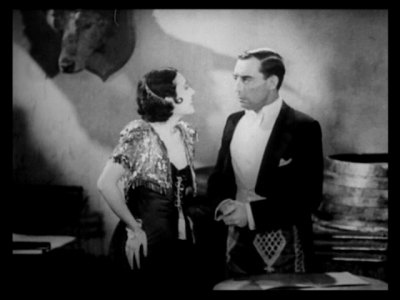
Keaton was married to his second wife at the time, Mae, and he was drinking heavily and it shows. Though he looks better here than he does in some of his MGM features, he's not the clown that he was only a few years earlier. The film itself is padded horribly in order to attain feature length, and this padding, including a long dance scene, only serves to grind the comic action to a halt.
The rest of the first disc is taken up with a selection of promotional films that were produced over the years. These include; Seein' Stars (1922), The Voice of Hollywood #10 (1929), and Hollywood on Parade #A-6 (1933). These are a lot of fun to watch. They feature both staged and candid footage of several notables including Charlie Chaplin, Buster Keaton, and Thomas Ince, among others. The final film has a look at Keaton's 'land yatch' that he bought while working at MGM.
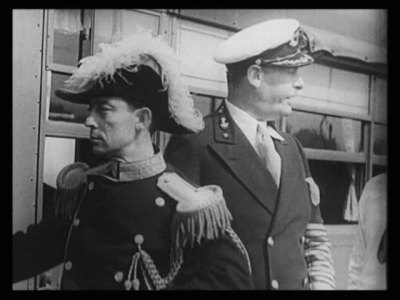
Disc Two:
The second disc was the more entertaining of the two. It starts off with several live TV appearances that Keaton made in the early days of the medium back when shows were aired live. Keaton often recreated scenes from his silent films, and the one that was done most often was the "Can of Molasses Sketch" from his very first film, The Butcher Boy (1917). This section starts off with an excerpt from the original film, followed by three recreations of Keaton's first film scene.
These are all a lot of fun, and it's interesting to see how the scene changes over the years and the gags that Keaton adds to it. A very nice selection. This section includes clips from the following shows:
The Butcher Boy (1917)
The Ed Wynn Show (1949)
The Ken Murray Show (1952)
You Asked For It (1957) (w/ Billy Gilbert)
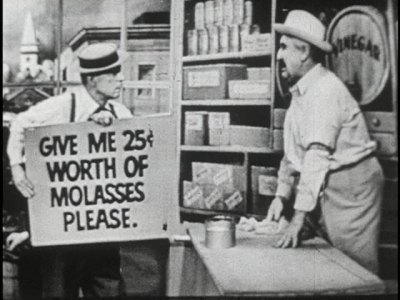
Keaton also recreates a scene from Chaplin movie Limelight on The Martha Raye Show (1956). Martha plays Chaplin's characters and Keaton reprises his role. Keaton really outshines Raye who hams it up a bit too much.
The last scene is a seven and a half minute excerpt from the show Circus Time (1956) in which Keaton preforms one of his vaudeville routines. A very funny piece that shows that Keaton hadn't lost his touch even as he got older. One can only imagine how funny it would have been to see the Three Keatons preform it live.
There are many commercials included too. These short comedy skits with Buster are rarely seen and a lot of fun to watch. They include:
Alka Seltzer (1958) [5 spots]
Northwest Orient Airlines (1958)
Simon Pure Beer (1958) [6 spots]
Shamrock Oil / Outtakes (1959)
Milky Way (1961)
Pure Oil (1965)
Country Club Malt Liquor (1958) [3 spots]
Ford Econoline (1963)
Jeep - Lessons in Living (1960) - this is the only surviving complete Jeep commercial, with Buster in a comedy vignette at the beginning. In addition there are several other Keaton segments (without the sales pitch at the end) from other Jeep commercials.
Pure Oil (1965) - this is one of the funniest pieces in the set, not to mention a great commercial. Buster is a gas station attendant who helps a motorist who has run out of gas.
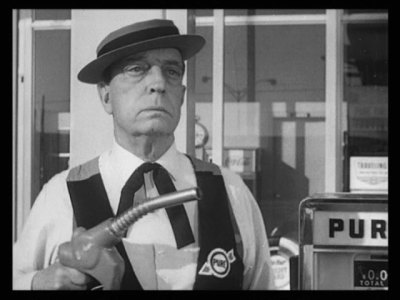
The set wraps up with a trio of industrial films that Keaton preformed in. The first, The Devil To Pay (1960) is a curious half hour film made by the National Association of Wholesalers that shows what happens when a NASA rocket accidently lands on the Devil's (Keaton) flower garden.
I really enjoyed The Homeowner (1961) a color half hour film that Keaton made to sell houses in Phoenix AZ. John F. Long, a big developer in Phoenix produced this film, but Keaton came up with the gags. A pretty funny film, and also an effective sales tool.
The Triumph of Lester Snapwell (1963) is another color short, this one to promote the Kodak Instamatic camera. Killed while trying to photograph his sweetheart, Lester (Keaton) is taken through different time periods where he has trouble photographing his subjects until he reaches the 60's and experiences the ease of the newest Kodak camera. Not the funniest film in the bunch, but it still had its moments.
These industrial films are great to watch. Keaton had a lot of freedom in these and there are a lot of very comic moments. Some of the gags are great. I especially like the bit in The Homeowner where Keaton sees all of the awards that the builder has won, and then opens his coat to show off his own award: an Oscar.
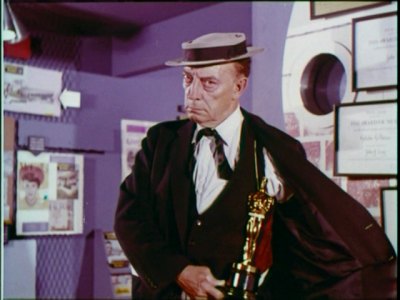
The DVD:
Audio:
The audio quality is pretty good, though a bit of a mixed bag. The silent movies have nice contemporary scores that sound great, but most of the early sound features have some hiss and noise in the background. The TV segments have the roughest audio tracks, with little range and muted sounds. The commercials and industrial segments are better than I would have expected though. Overall an acceptable if not outstanding audio presentation.
Video:
The video quality of these films varies. Some of them leave a bit to be desired and have a lot of print damage or low contrast, like the footage from The Butcher Boy. Other films look great though. The color industrial films are all better than I would have expected them to be after decades of neglect. As for the features, Parlor, Bedroom, and Bath is okay, but better than the version on the Passport Video boxed set. An Old Spanish Custom (from a 16mm print) has been touched up a bit, and looks fine though the image is still a bit soft and there are some spots and scratches.
Just about all of the TV spots are very soft and a bit blurry, but still watchable. Over all I'd say this set is very good when considering the rarity and age of these films.
Extras:
There are a good number of extras included in this set. This collection has ample audio commentary tracks by various film historians. Films with comments include The Playhouse, Character Studies, Parlor, Bedroom, and Bath, and An Old Spanish Custom. On the second disc, commentaries are found on the Shamrock Oil spots and The Home Owner. These were generally very good. I particularly enjoyed the commentary on An Old Spanish Custom by Richard Roberts. He admits right off the bat that this isn't a great Keaton picture, but then goes on to give some interesting details about the show and the drama that went into making it.
1 Parlor, 5 Bedrooms and 6 Baths is an original 18-minute documentary the profiles Keaton's Beverly Hills house, the Itallian Villa.
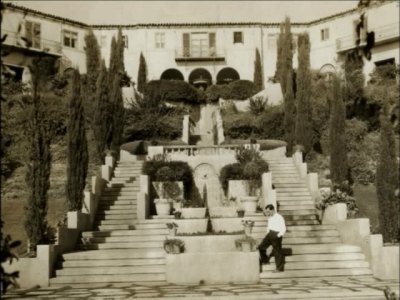
There are also a still gallery featuring previously unseen Keaton images, an original press book, and trade advertisements on the discs themselves. Included with the set is a 20 page full color booklet with detailed descriptions of each film, archival photos and essays from authors/historians Ken Gordon, Steve Massa, David B. Pearson, Patricia Eliot Tobias.
Final Thoughts:
This is a very good set. While it's not a retrospective of Keaton's career, it does cover his entire career and includes many films that you'd have a hard time seeing anywhere else. Not only are these rare films, but many of them very funny and this two disc set is bargain priced too. This is a great supplement to any library of Buster Keaton films and gets a high Recommendation.
Comments? Suggestions? Feel free to send me an e-mail.
Archives
Source: https://www.dvdtalk.com/silentdvd/buster_keaton_c.html
0 Response to "So Funny It Hurt Keaton Dvd"
Post a Comment